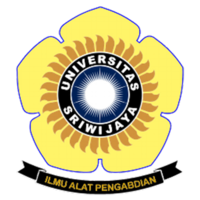Potensi Daun Duduk (Tadehagi triquetrum (L.) H.Ohashi) sebagai Tanaman Obat dan Budidayanya: Review
Abstract
Wijaya, N.R., & Safrina, D. (2023). Trefle Gros (Tadehagi triquetrum (L.) H.Ohashi) potency as a medicinal plant and its cultivation: Review. In: Herlinda S et al. (Eds.), Prosiding Seminar Nasional Lahan Suboptimal ke-11 Tahun 2023, Palembang 21 Oktober 2023. (pp. 626-634). Palembang: Penerbit & Percetakan Universitas Sriwijaya (UNSRI).
As the return to nature lifestyle develops, various medicinal plant uses are increasingly in demand by the public. Tadehagi triquetrum (L.), known as trefle gros, is a plant with medicinal properties. Apart from being used as medicine, this plant from the Fabaceae family is also consumed as a substitute for tea. This plant, which grows at an altitude of 500-1400 meters above sea level, grows on hillsides and in bushes. Its appearance is like a tiny, woody shrub that grows upright. The leaves are oval with wings on the stalk; the compound flowers are purple; the pods and small seeds are light brown. The chemical compounds contain alkaloids, flavonoids, tannins, saponins, phenols, sterols, hyperforin, trigoneline and amino acids. Plant parts such as roots, leaves and herbs are used in countries such as China, India, Laos and Myanmar to treat fever, coughs, snakebites, diabetes, tuberculosis and hemorrhoids. Research shows that this plant has potential as an anti-inflammatory, antioxidant, anti-hyperlipidemic, immune-boosting, antibacterial, anti-cancer, hepatoprotective and wound healing agent. In general, T. triquetrum is not widely cultivated in Indonesia because little is known about its benefits and how to propagate it. This growth is generally obtained from nature, and the harvest is limited. Propagation can be done through seed germination, cuttings or tissue culture methods. The article aims to increase knowledge regarding the potential of T. triquetrum as a medicinal plant so that its existence can be used optimally.
Keywords
Full Text:
PDFArticle Metrics
Abstract view : 267 timesPDF - 1124 times
Refbacks
- There are currently no refbacks.

